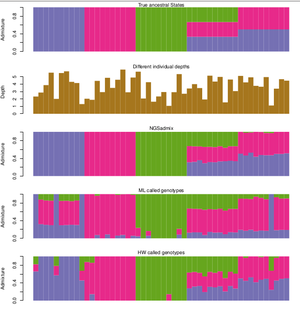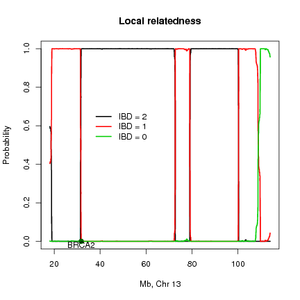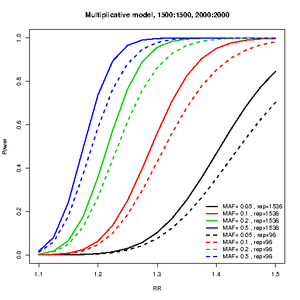Main Page: Difference between revisions
| (27 intermediate revisions by 4 users not shown) | |||
| Line 13: | Line 13: | ||
= [[NgsAdmix]] = | = [[NgsAdmix]] = | ||
[[File:NgsAdmix.png|thumb|NGSadmix]] | |||
Infer the ancestry proportions from low depth NGS data. The principal is the same as other softwares such as FRAPPE and ADMIXTURE however, ngsAdmix also works when you have uncertainty in your data. This makes it ideal for medium and low depth sequencing data where many genotypes cannot be called without introducing errors or ascertainment bias. | |||
= [[fastNGSadmix]] = | |||
Program for estimating admixture proportions and doing principal component analysis of a single NGS sample. | |||
= [Relate Relate]= | = [[asaMap]] = | ||
Program for doing ancestry-specific association mapping in admixed populations, working with genotypes. | |||
= [[NgsRelate]] = | |||
A software package for inferring relatedness and inbreeding between pairs of individuals from NGS data. This is a new version. | |||
= [[Relate]]= | |||
[[File:relate.png|thumb|left|Relate. Infered IBD sharing across a chromosome for a sib pair estimated using affy 500k data]] | |||
This method estimates the probability of sharing alleles identity by descent (IBD) across the genome and can also be used for mapping disease loci using distantly related individuals. To accommodate LD the methods need SNP for several individuals in order to estimate the allele frequencies and the pairwise LD. The method return the posterior probabilities of the IBD states across the genome and the overall IBD sharing. | |||
= [[RelateAdmix]] = | |||
A software package for inferring relatedness between pairs of individuals even if the individuals are admixed. | |||
= [[BAMSE]] = | |||
= [[CATS]] = | |||
[[File:catsFig2.png|thumb|left|joint power of a non-symetric two stage GWA design]] | |||
R package for power estimation for a two-stage genome-wide association design. This is a modification of the code from Skol et al 2006, nat genet. so that the relative risk, case-control ratios and allele frequencies are allowed to vary between stages. | |||
= [[IBSrelate]] = | |||
= [[LDadmix]] = | |||
= [[R scripts]] = | |||
Latest revision as of 06:13, 23 March 2019
ANGSD
Analysis of Next Generation Sequencing Data
<classdiagram type="dir:LR"> [sequence data]->[genotype;likelihoods] [genotype;likelihoods]->[genotype;probabilities] [sequence files|bam files;SOAP files{bg:orange}]->[sequence data] [glf files|glfv3;soapSNP{bg:orange}]->[genotype;likelihoods] [genotype prob|beagle output{bg:orange}]->[genotype;probabilities] </classdiagram>
NgsAdmix

Infer the ancestry proportions from low depth NGS data. The principal is the same as other softwares such as FRAPPE and ADMIXTURE however, ngsAdmix also works when you have uncertainty in your data. This makes it ideal for medium and low depth sequencing data where many genotypes cannot be called without introducing errors or ascertainment bias.
fastNGSadmix
Program for estimating admixture proportions and doing principal component analysis of a single NGS sample.
asaMap
Program for doing ancestry-specific association mapping in admixed populations, working with genotypes.
NgsRelate
A software package for inferring relatedness and inbreeding between pairs of individuals from NGS data. This is a new version.
Relate

This method estimates the probability of sharing alleles identity by descent (IBD) across the genome and can also be used for mapping disease loci using distantly related individuals. To accommodate LD the methods need SNP for several individuals in order to estimate the allele frequencies and the pairwise LD. The method return the posterior probabilities of the IBD states across the genome and the overall IBD sharing.
RelateAdmix
A software package for inferring relatedness between pairs of individuals even if the individuals are admixed.
BAMSE
CATS

R package for power estimation for a two-stage genome-wide association design. This is a modification of the code from Skol et al 2006, nat genet. so that the relative risk, case-control ratios and allele frequencies are allowed to vary between stages.